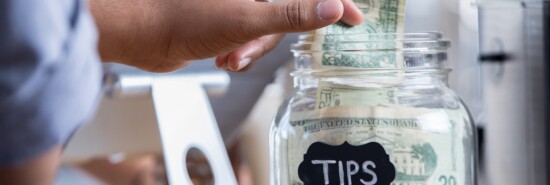
No, do not tip 20% at a coffee cart
Tiana Lowe
Video Embed
As though the rest of us took a three-year hiatus from respectable society, New York magazine decided to instruct us on the “updated rules” for behaving in public. While the constant coronavirus consciousness of many of the rules will surely bewilder normal people, no set of guidelines is more baffling than the publication’s rules for tipping.
Without an air of critical thinking, the magazine embraces the fact that “the previous range of socially acceptable and ethically expected tips was 15 to 20 percent,” but now, “it’s 20 to 25.”
STATE OF THE UNION 2023: BIDEN TO PROPOSE ‘BILLIONAIRE MINIMUM TAX’
“The higher your disposable income, the more you should tip, but anything under 20 percent is rude,” the magazine chides. “Blame this on inflation, COVID, the heightened awareness of the fact that more than half your servers’ salary probably comes from tips.”
This 20% minimum rule includes not only actual wait service but also coffee shops, carts, cafes, bodegas, food delivery, Uber rides, and cocktails. The only exceptions allowed are for plain cups of coffee or beer ($1 per drink is permissible), takeout (though you must tip at least 10%), and food counters (another 10% minimum tip required).
Without outing myself as a curmudgeonly conservative Scrooge McDuck, may I kindly suggest these standards are beyond the pale, both in terms of the theory in tipping and public outcry in practice?
The formal term for a tip, gratuity, originates from the Latin term for “freely given.” This reflects how tips are used today everywhere else in the world except America. Even in the States, Emily Post recommends tiers of tipping far less onerous than those posed by New York.
The institute, run by the etiquette maven’s descendants, urges readers to tip 15% to 20% of the pre-tax subtotal for sit-down service at a restaurant but just 10% at a buffet. Takeout only calls for a 10% tip when an order is large, complicated, or entails curb delivery.
Yet coffee shops will prompt users for tips beginning at 20% for the service of pouring hot water into a cup, deftly deflecting the responsibility for shifting an employee’s wage from the employer onto the dumbstruck consumer. According to Square, the payment processor responsible for that iPad attempting to shame consumers into tipping $3 on an overpriced latte, tip frequency at quick-service restaurants grew 16%.
Lost in the debate on how much unskilled workers deserve is how much it costs the skilled workers left out in the cold. If you’re expected to tip 20% on kombucha and pre-packed sandwiches, how much is left to spare on higher-skilled services done with far more care? Surely the barber or manicurist who spends a half hour on their craft should elicit a greater gratuity than the teenager scooping ice cream into a cone.
The tipping discourse, which has migrated from magazines to the mainstream of CBS and NBC, is ultimately a product of the post-pandemic economy. Prior to COVID, the first real wage growth in a decade was disproportionately benefiting lower-income workers, and at the start of shutdowns, consumers awash with stimmy checks and local governments alike tried to make up the losses of the food service industry.
But the logical consequence of increasing the money supply by 33% in three years, inflation, ignited with a vengeance, and now, consumers hit by rising prices across the economy are supposed to make up the difference. But acknowledging the truth would require pointing the finger, not across the cash register (or iPad), but upward at the federal government.
CLICK HERE TO READ MORE FROM THE WASHINGTON EXAMINER
